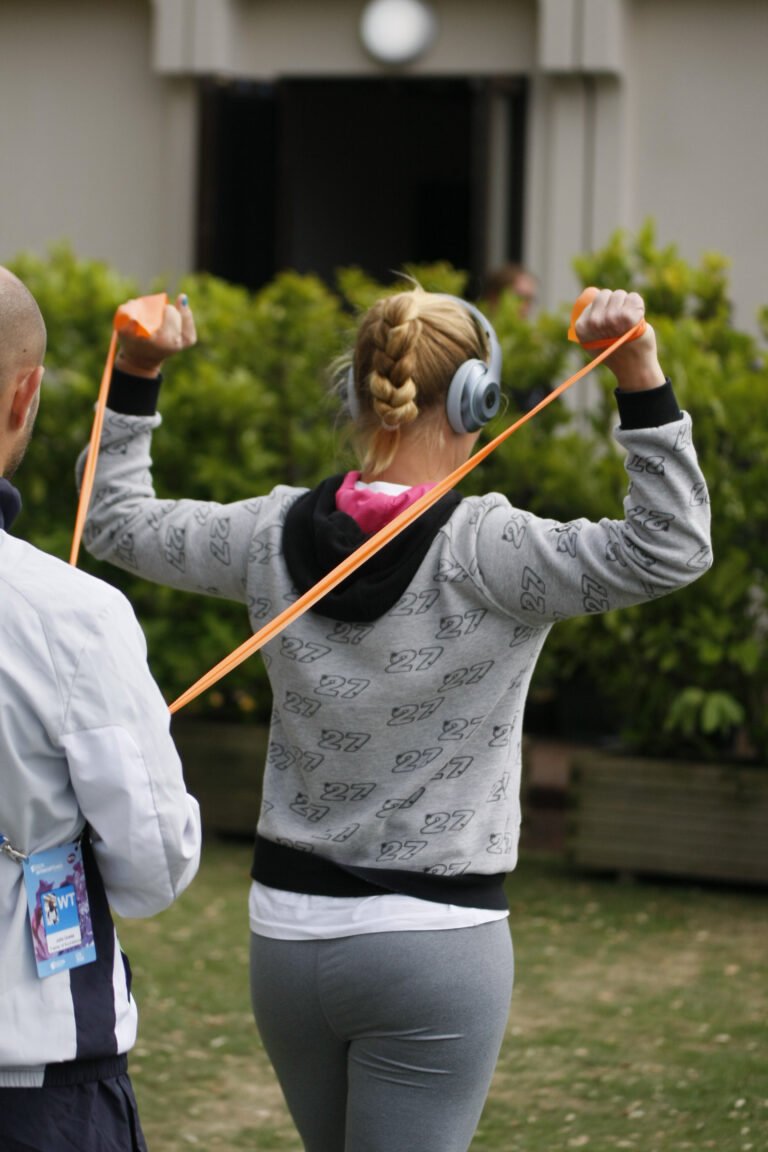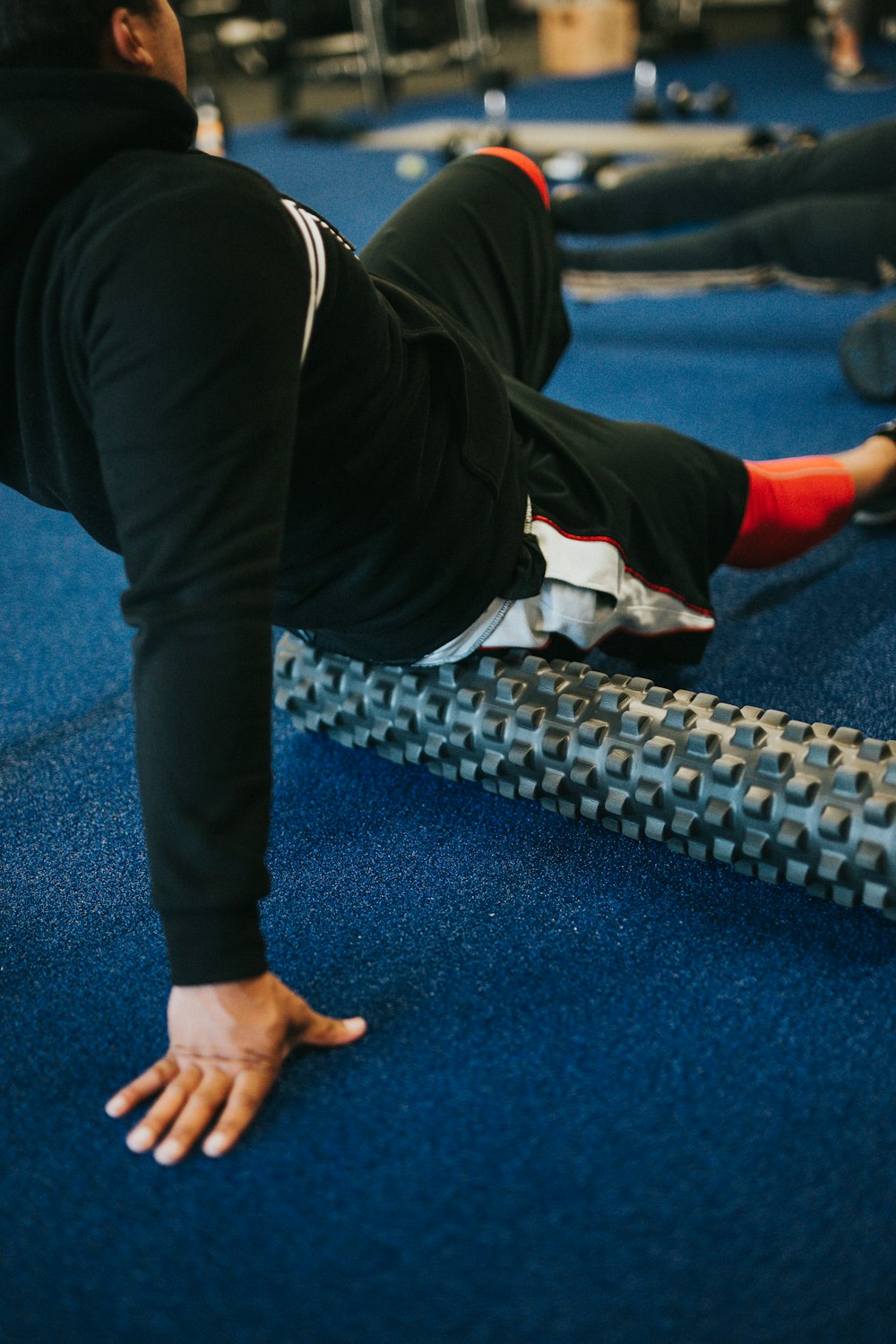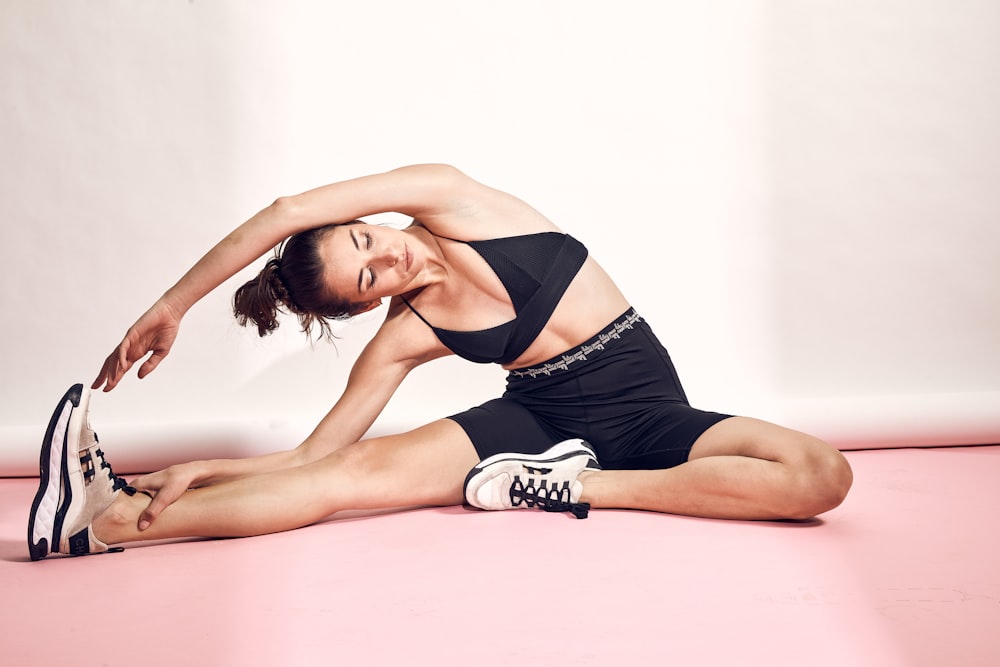Tennis Warm-Up Exercises: Ace Your Game with the Perfect Pre-Game Routine
I always remember my sports teacher at school telling our class that the warm-up and warm-down were so important as part of physical exercise. We used to think that he was crazy. The older I get the more I listen to my old teacher. Warming up is so important and a great way to get your body ready ahead of a game of tennis or any physical activity you are about to perform.
In this article, we will focus on why you should warm up and some specific exercises for the game of tennis.
The Importance of Tennis Warm-Up Exercises
The same way you tune a musical instrument before a concert, you prepare your body before a tennis game. Flexibility is enhanced, circulation is boosted, and muscles are primed for optimal performance with the right warm-up routine.
Why Is It Important to Warm Up Before Playing Tennis?
Players’ bodies can be taxed when they have to maneuver across the court quickly, serve powerful shots, or reach for a forehand. It is essential to stretch and warm up before a game to prevent injuries and improve your performance on the court. Tennis elbow and rotator cuff tears can be prevented by exercising regularly in these areas.
Tennis Warm-Up Exercises: A Comprehensive Guide
You can prevent potential tennis injuries by warming up before a match. The following exercises can be incorporated into your next warm-up:
Jumping rope
When you jump rope during your warm-up routine, you will improve your speed, agility, balance, and coordination. Performing arm circles while jogging in place is another way to warm up your shoulders and add cardio.
Cardio
A tennis warm-up should include four to five minutes of running, skipping, or jumping (forward, backward, and lateral). It is important to increase your intensity with each minute so you can boost your heart rate and circulation.
All our players need to skip. It is a great activity to incorporate right from the start of your tennis career, especially if you need coordination in your arm and leg movements. Also, it helps you stay on your toes. Skipping was strongly advocated by Steffi Graf.
The fuss is minimal as well. A space and a rope are all you need. Running has a higher impact than skiing – so injuries are less likely to occur. However, you should always choose softer surfaces when you can. Skip off the court instead of keeping the rope in your bag.
Skipping tips
Skipping can also be improved by standing straight, without leaning forward as you skip. You should keep your elbows at waist level, tightly tucked. It is important to teach your skipping rope. Keep your rope from getting tangled by skipping fast. When you jump, place your feet on the balls and land softly, and make sure you alternate jumping and landing on both your right foot and left foot.
Jumping jacks
In addition to increasing your heart rate and building endurance, jumping jacks can help you prepare for tennis. The first set should consist of 25 repetitions.
Channel Your Focus Through Mindful Breathing
By incorporating mindful breathing exercises into your routine, you can elevate your mental game. You will be able to concentrate more on the court and make better decisions if you center your focus. Be more zen 🙂
Shadowing
Try to mimic the movements and motions you make during a tennis match for three to five minutes. Prepare yourself mentally and physically for the game by practicing forehands, backhands, volleys, and service motions. This is a
great warm-up exercise and helps players get in the zone.
Knee lifts
There is a lot of movement involved in tennis. Raising your arms to hip level and touching your knees while standing in place. Three sets of 15 to 30-second sets of knee lifts should be performed.
Dynamic Lunges for Lower Limb Agility
With dynamic lunges, you can strengthen your lower body and improve your flexibility. Exercises that target lateral movements are specifically targeted in this exercise. This is a great exercise for strength training.
Arm Circles: A Must for Serving Precision
By warming up your arms and shoulders, you will be able to serve better. As a result of this exercise, the upper body receives a greater blood flow.
Butt kicks
Butt kicks are jump-training exercises that target your knees, glutes, quadriceps, calf muscles, and hamstrings. You can do this by lifting your left heel toward your glutes, returning to standing, and then lifting your right heel similarly. Three sets of 15 to 30-second butt kicks should be performed.
Planks for Core Stability
With planks, lay the foundation for a strong structure. To maintain balance and execute powerful shots, you need a stable core.
Mini-tennis
You should practice taking powerful swings on a smaller scale before you can take them from the baseline. Rally with another player, keeping the tennis ball within the service boxes, starting at the center of the service line. You can begin practicing groundstrokes and volleys in mini-tennis without expending too much energy.
Agility Ladder Drills for Swift Movements
With agility ladder drills, you can lay the foundation for nimble footwork. During these drills, the foot movements required for tennis are simulated. This is one of my favorites and the best warm-up exercises out there in my view.
Tennis Stretches Types
The game of tennis requires players to perform stretches that target a variety of muscle groups as they move quickly in many directions. Stretching routines should include the following four dynamic stretches:
Straight leg march
You’ll stretch your glutes, hamstrings, and lower back. Stretch your lower body by standing straight, lifting your left arm to hip level, and locking your knees. Reach your right hand with your right leg. Using both arms and legs, repeat. Every leg should be repped twice.
Hand walks
Stretch your hamstrings, shoulders, and core in this full-body exercise. The hand walk is performed by bending over and placing both hands flat on the ground. Your back should almost be extended as you walk forward with your hands. Keeping your legs straight, walk your hands forward, then inch your feet towards your hands. Two sets of five repetitions should be performed.
Standing trunk rotations
Your lower back is stabilized by the paraspinal muscle, which is targeted by trunk rotations. Place your hands on top of each other as you stand straight, feet shoulder-width apart. Gently rotate your torso from one side to the other. Ten reps per set are performed twice.
Lateral lunges
The inner thighs, quadriceps, and glutes are targeted by lateral lunges. You should stand straight and lower your hips to perform this lower body stretch. As you take a big step to the side with one leg, bending at the knee as you keep your other leg straight, adopt a secure stance. Switch to the other leg after a few seconds. Two sets of ten repetitions should be performed.
What Is the Most Effective Type of Stretching for Tennis Players?
Warming up for tennis with dynamic stretching is a great idea. Stretching dynamically involves short bursts of muscle activity without static holding of a position for a long period. Researchers have found that static stretching is a better method for cooling down and reducing soreness.
FAQs about Tennis Warm-Up Exercises
How long should a tennis warm-up session last?
Warming up for 10-15 minutes will adequately prepare your body without causing fatigue.
Can I replace dynamic stretching with static stretching?
Activating muscles and improving range of motion are the benefits of dynamic stretching, while static stretching is more suitable for tennis warm-ups.
Are tennis warm-up exercises essential for casual games?
To prevent injuries and maximize performance, warming up is crucial no matter how intense the game is.
Can I customize my warm-up routine based on my playing style?
Absolutely! Whether you focus on serves, volleys, or baseline play, tailor your warm-up to address specific aspects of your game.
Is it necessary to warm up before practice sessions?
You can condition your body for gameplay by incorporating warm-up exercises before practice sessions.
Are there specific warm-ups for different court surfaces?
It is important to adjust your warm-up routine according to the type of court you will be playing on. Adaptability can be enhanced by surface-specific warm-ups.
Conclusion
It is important to warm up before a game of tennis whether you are a professional or a local club player. As I get older it is so important to do simple exercises such as the ones listed above to warm the entire body up for the rigors of tennis. I always start by getting the blood flowing around my body and then move into some static stretching. When static stretching I make sure to focus on my legs and in particular my serving arm. As soon as I step on the tennis court I want to make sure I am ready to from the first point.
These days I also focus on the mental side as part of my warm-up routine. I practice focusing on the game, my opponent, and listen to music as for me this is the perfect way to get ready.
By doing a good warm-up (and also conducting cool-down exercises) there is no doubt you help with injury prevention and keep your body in the best shape for tennis. Remember if you experience pain stop any physical exercise and seek advice from a medical professional.






Comments are closed.